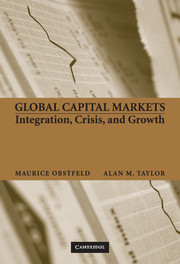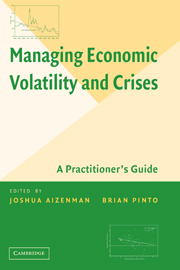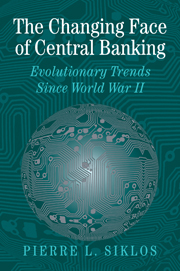Global Capital Markets
This book presents an economic history of international capital mobility in the modern era. It blends narrative and quantitative methods and connects economic outcomes to the underlying political economy of international macroeconomics. The volume demonstrates that the recent globalization can be seen, in part, as the resumption of a liberal world order that had previously been established in the years 1880-1914, but also points out that much is different in terms of its causes and consequences.
- Most succinct, up-to-date analysis available of global capital markets, hot topic
- Senior author, world-class scholar, internationally renowned
- Rich in historical perspective, clearly written, no math, just figures and tables
Reviews & endorsements
Overall, Global Capital Markets is an excellent study of the evolution of international capital markets since the classical gold standard period. This book is a must read for economists and economic historians with an interest in international economics. EH.NET
"Maurice Obstfeld and Alan Taylor have written a wonderful book that raises the academic bar...it is a coherent and comprehensive assessment covering all the issues...In short, there is no book out there to challenge the GCM and it should remain the market leader for some time to come."
Jeffrey G. Williamson, Journal of Economic Literature
Product details
March 2004Hardback
9780521633178
374 pages
229 × 152 × 25 mm
0.72kg
Available
Table of Contents
- Part I. Preamble
- Section 1. Global Capital Markets: Overview and Origins:
- 1. Theoretical benefits
- 2. Problems of supernational capital markets in practice
- 3. The emergence of world capital markets
- 4. The trilemma: capital mobility, the exchange rate, and monetary policy
- Part II. Global Capital in Modern Historical Perspective
- Section 2. Globalization in Capital Markets: Quantity Evidence:
- 5. The stocks of foreign capital
- 6 The size of international flows
- 7. The saving-investment relationship
- 8. Caveats: quantity criteria
- Section 3. Globalization in Capital Markets: Price Evidence:
- 9. Real interest rate convergence
- 10. Exchange-risk free nominal interest parity
- 11. Purchasing power parity
- 12. Caveats: price criteria
- 13. Summary
- Part III. The Political Economy of Capital Mobility
- Section 4. Globalization in Capital Markets: A Long-Run Narrative:
- 14. Capital without constraints: the gold standard, 1870–1931
- 15. Crisis and compromise: depression and war, 1931–46
- 16. Containment then collapse: Bretton Woods, 1946–71
- 17. Crisis and compromise II: the floating era, 1971–99
- 18. Measuring financial integration using data on legal restrictions
- Section 5. The Trilemma in History:
- 19. Methodology
- 20. Data sources
- 21. Stationarity of nominal interest rates
- 22. Empirical findings: pooled annual differences
- 23. Empirical findings: individual-country dynamics
- 24. Conclusion
- Section 6. Sovereign Risk, Credibility and the Gold Standard:
- 25. Five suggestive cases
- 26. Econometric analysis
- 27. Conclusion
- Part IV. Lessons for Today
- Section 7. Uneven Rewards:
- 28. Foreign capital stocks: net versus gross
- 29. Foreign capital flows: rich versus poor
- 30. Foreign capital stocks: rich versus poor
- 31. Then: has foreign capital always been biased to the rich?
- 32. Now: have poor countries really liberalized their markets?
- 33. Variations in the types of capital flows
- 34. Summary
- Section 8. Uneven Risks:
- 35. Open markets, crises and volatility
- 36. Crises, controls and economic performance
- 37. Contagion and self-fulfilling crises
- 38. Market failure, government failure and policy choices.






